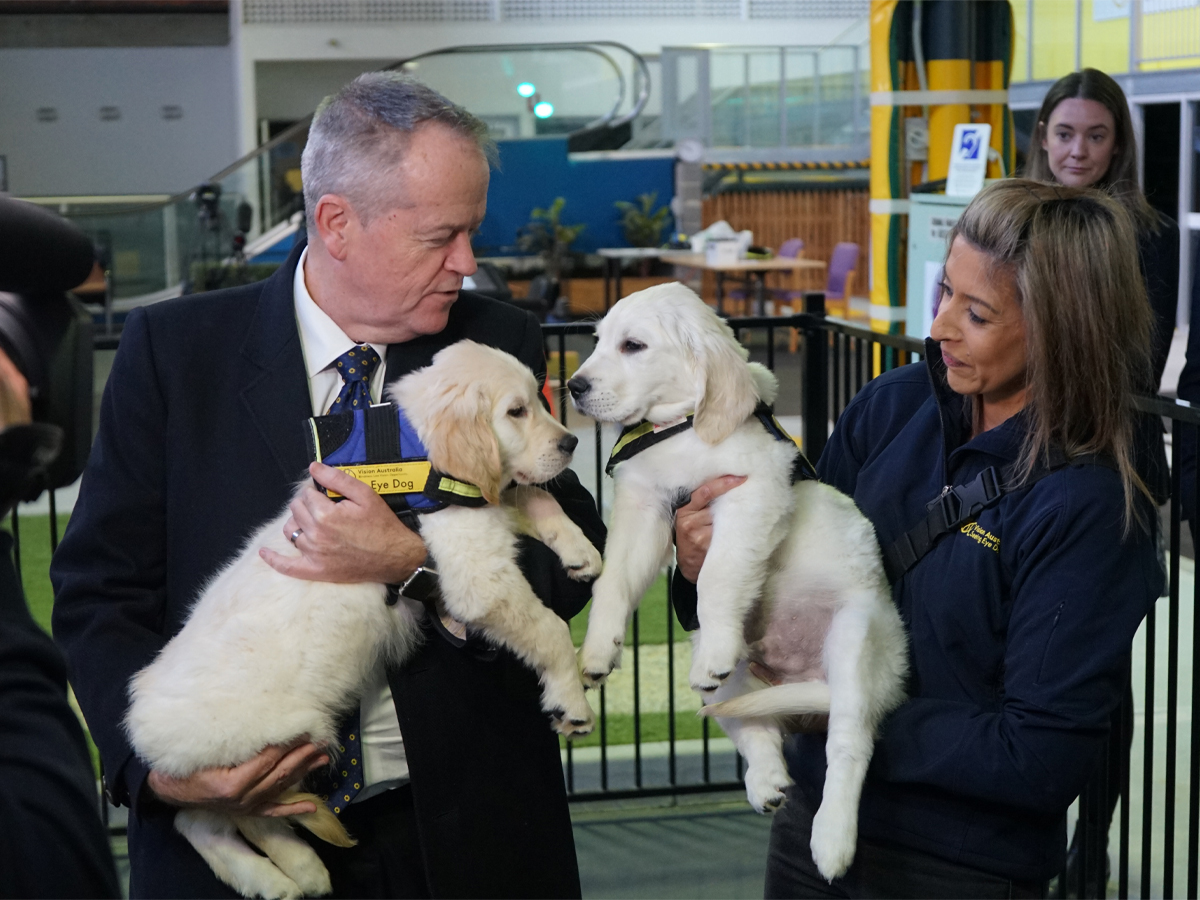Since the National Disability Insurance Agency set up new operational guidelines for assistance animals last year, Vision Australia has expressed concern for how they are affecting its clients’ lives.
There have been instances where NDIS participants have had to rely on a white cane for mobility, after being deemed ineligible for Seeing Eye Dog funding. Revised dog warranties are also incompatible with global data drawn from accredited International Guide Dog Federation organisations as a metric of a dog’s working life.
In response to these and related concerns, NDIS Minister Bill Shorten recently held discussions with Vision Australia, touring its Seeing Eye Dog training facility in Melbourne.
Speaking at the meeting, he said seeing Eye Dogs are vital in the lives of people who are blind or have low vision.
“There are many discussions I’m having with the sector, to understand the different challenges within the NDIS, but also the solutions. I have said it before but getting the NDIS back on track is not a task I take lightly, and it’s not one I can do on my own.”
The minister met Seeing Eye Dog puppies in training from the latest litter and urged Melburnians to consider a year of puppy fostering.
Vision Australia chief executive, Ron Hooton, said he appreciated the minister taking the time to meet with Seeing Eye Dog handlers and trainers to better understand the NDIS issues affecting the blind and low vision community.
“Working together, we can continue to improve conditions and opportunities and support people who are blind or have low vision to live the life they choose,” he said.
Caption: NDIS Minister Bill Shorten with senior puppy development trainer Kim Rulach.

